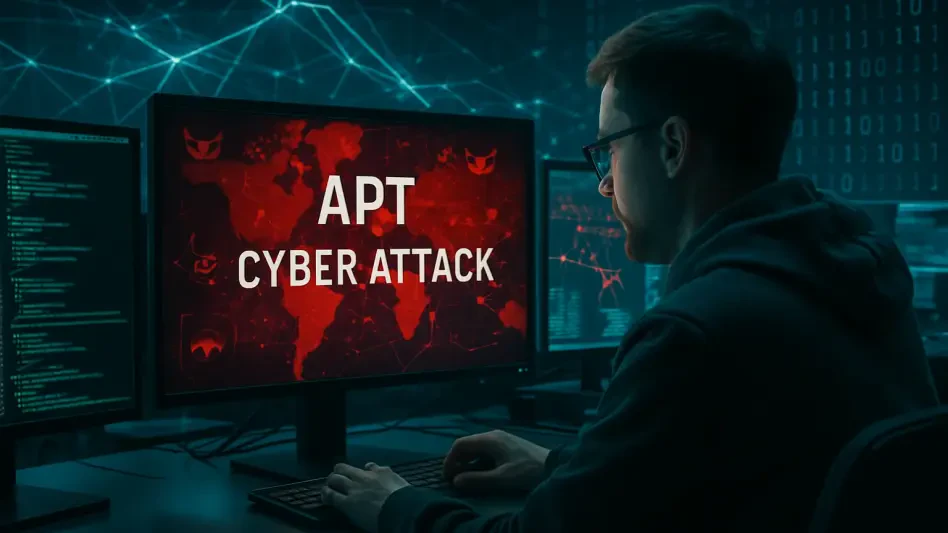In a chilling revelation that underscores the escalating sophistication of cyber threats, Amazon’s threat intelligence team has uncovered a highly resourceful advanced persistent threat (APT) group exploiting zero-day vulnerabilities in critical enterprise systems. These vulnerabilities, identified in Cisco Identity Services Engine (CVE-2025-20337) and Citrix NetScaler (CVE-2025-5777, dubbed CitrixBleed 2), were targeted well before vendors disclosed or patched them earlier this year. This discovery raises alarming questions about the speed at which adversaries can weaponize flaws in identity and network infrastructure, often outpacing the response capabilities of even the most vigilant organizations. As enterprise systems become increasingly central to operational security, the ability of threat actors to exploit such gaps poses a profound risk, demanding urgent attention to proactive defense mechanisms and rapid information sharing.
Uncovering a Sophisticated Threat Actor
The depth of technical expertise displayed by this APT group is nothing short of staggering, as evidenced by their tailored approach to exploiting zero-day flaws. Amazon’s MadPot honeypot service detected active attacks on Cisco ISE as early as May, with exploitation predating the vendor’s public disclosure on June 25. Similarly, Citrix NetScaler systems faced over 11.5 million attack attempts by mid-July, targeting thousands of sites after the flaw’s disclosure on June 17. What sets this group apart is their use of custom malware, including a backdoor specifically designed for Cisco ISE environments. This malware demonstrated advanced evasion techniques and a deep understanding of enterprise Java applications and Tomcat internals, pointing to a level of skill and resources rarely seen in typical cybercrime operations. Such capabilities suggest either cutting-edge vulnerability research or access to undisclosed data, amplifying concerns about the security of critical infrastructure.
Further investigation by Amazon confirmed with high confidence that the same APT group orchestrated both the Cisco and Citrix attacks, showcasing a strategic intent to secure prolonged access for espionage purposes. CJ Moses, Amazon’s Chief Information Security Officer, highlighted that the primary goal appeared to be sustained infiltration rather than immediate disruption. While the specific identity and origins of the group remain undisclosed, their ability to operate undetected for extended periods before vendor patches were available speaks volumes about the evolving threat landscape. The rapid timeline of exploitation—often within weeks or even days of a vulnerability’s discovery—underscores a troubling trend where adversaries are consistently a step ahead. This situation emphasizes the critical need for organizations to bolster real-time threat detection and for vendors to accelerate patch development and deployment to close these dangerous windows of exposure.
Targeting Critical Infrastructure Systems
A broader trend identified in Amazon’s findings points to a deliberate focus by threat actors on identity and edge systems, which serve as the backbone of enterprise security. These components are pivotal, acting as gatekeepers to sensitive data and operational continuity, making them prime targets for espionage-driven campaigns. The exploitation of zero-day vulnerabilities in such systems reveals a calculated approach by the APT group to undermine the very foundations of organizational defenses. This shift in focus from traditional endpoints to core infrastructure illustrates a deeper understanding of systemic weaknesses, where a single breach can cascade into widespread compromise. The scale of attacks on Citrix NetScaler systems, in particular, prompted swift action from the Cybersecurity and Infrastructure Security Agency, which added the flaw to its known exploited vulnerabilities catalog by July 10, signaling the severity of the threat to national and global security frameworks.
Beyond the immediate impact, the use of multiple zero-day exploits by a single group raises questions about the sources of their intelligence and resources. Whether through insider knowledge or extensive research capabilities, the ability to identify and weaponize flaws before public disclosure suggests a level of sophistication that challenges conventional cybersecurity paradigms. Amazon’s delayed public disclosure of these incidents, months after initial detection, also sparks debate about the balance between operational secrecy and the need for timely warnings to affected parties. While the reasons for this delay remain unclear, it highlights a gap in collaborative threat intelligence sharing that could hinder collective defense efforts. Addressing this requires not only technological innovation but also a cultural shift toward faster, more transparent communication between vendors, threat intelligence teams, and the broader cybersecurity community to mitigate risks effectively.
Strengthening Defenses Against Evolving Threats
Reflecting on the incidents involving Cisco ISE and Citrix NetScaler, it became evident that the cybersecurity community faced a formidable adversary capable of exploiting critical flaws with precision and speed. The actions taken by Amazon to notify Cisco within hours of discovery, followed by Cisco’s prompt customer alerts, marked a crucial step in stemming the tide of potential damage, though the full scope of affected organizations was never fully disclosed. Similarly, the widespread attack attempts on Citrix systems underscored the urgency with which such threats were met by both vendors and regulatory bodies. These responses, while reactive, laid the groundwork for understanding the scale and intent behind the APT group’s operations, which prioritized long-term access over immediate destruction.
Looking ahead, the lessons from these attacks pointed to actionable strategies for fortifying defenses against such sophisticated adversaries. Prioritizing proactive threat detection through advanced honeypot systems and machine learning algorithms emerged as a key takeaway, alongside the need for vendors to shorten the window between vulnerability discovery and patch release. Enhanced collaboration across the industry was also deemed essential, ensuring that threat intelligence was shared swiftly to prevent exploitation at scale. Ultimately, these incidents served as a stark reminder of the importance of vigilance and adaptability in an era where cyber threats continually evolved, demanding robust mitigation strategies to safeguard critical enterprise infrastructure from future zero-day exploits.








